Making bread at home is such a satisfying thing to do and this recipe for slow cooker bread results in a delicious cob loaf which is soft on the inside with a beautiful golden crust. Just as it should be.
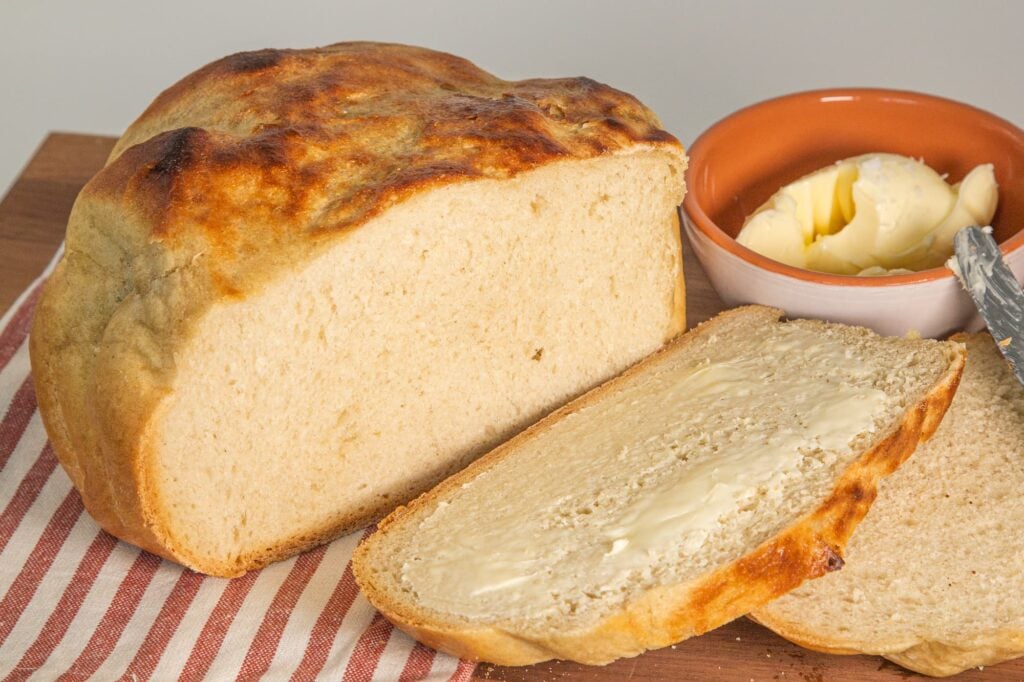
Jump To...
How to make bread in the slow cooker
Personally, I think bread-making is an incredibly fulfilling process and when the resulting bread tastes fantastic – the reward definitely outweighs the effort. This is even better when I can achieve this in my slow cooker! Using the slow cooker for baking also means that I get fresh bread aroma lingering through the house just that bit longer.
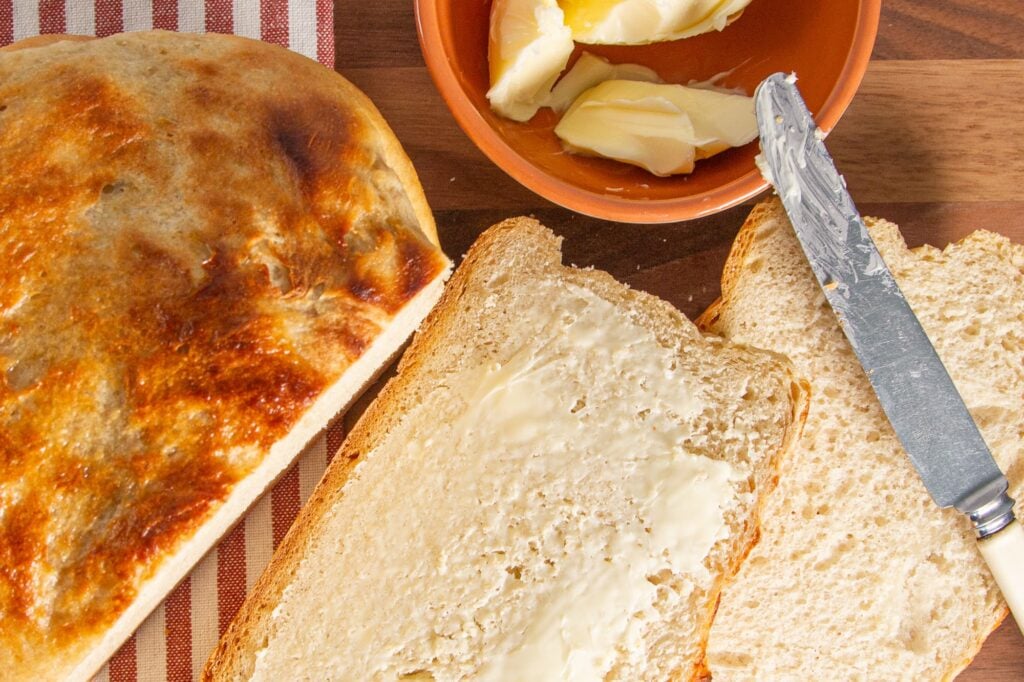
Making bread needn’t be the daunting task that it may seem. Yes, there are the steps to knead, proof and bake the bread but each phase is very straightforward. What’s more, in this recipe I also include plenty of tips and specialist instructions for the slow cooker.
Note that I say, special instructions for the slow cooker. Because whilst I maintain that baking in the slow cooker is simple, you do need to heed the fact that it is different to using an oven and can bear different results, even from the same recipe.
This is because an oven creates a dry, high heat whilst slow cookers cook at a lower temperature and trap moisture. There is no getting around it, these environmental differences will affect the bake. So the best thing to do is be prepared!
The method in my recipe is especially tailored for the slow cooker so just follow the steps and you’re good to go!
Why make this recipe?
- Bread is one of those shopping list staple items, so it’s really useful to have a simple and reliable recipe at home.
- Treat yourself to a freshly made cob loaf, crusty on the outside and soft in the middle.
- It’s fantastic served with soups, sliced for sandwiches or toasted for breakfast.
- It’s an easy to follow recipe with specialist instructions for the slow cooker.
- Plenty of tips to make the process simple with ways to check technique at each step.
- It is simple to add additional flavourings or toppings to the bread.
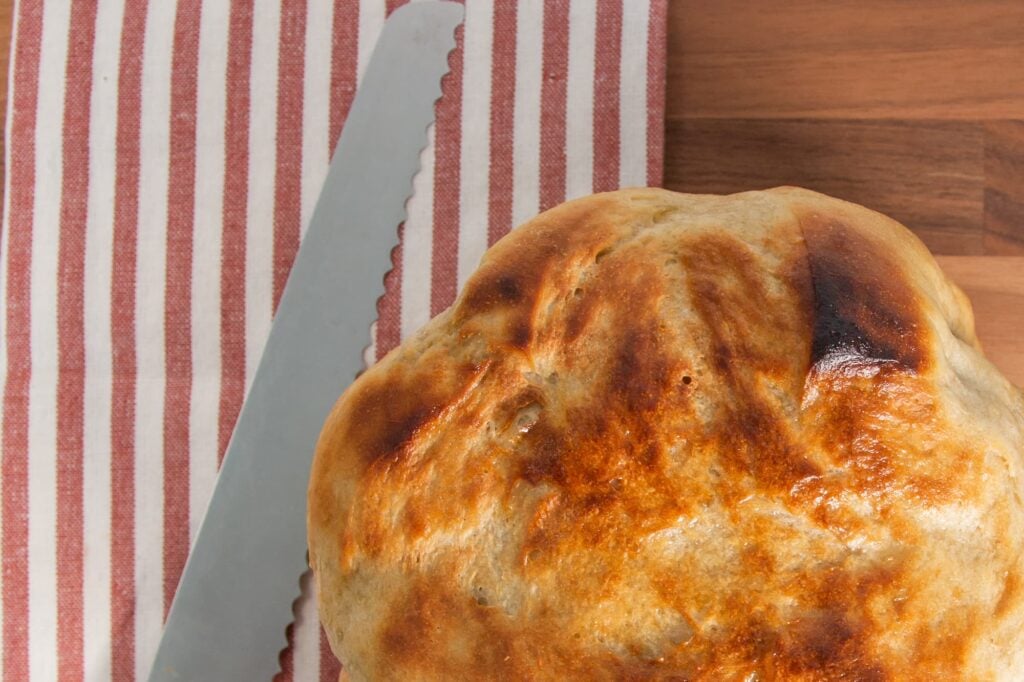
What You’ll Need
Here is what you will need to make bread in the slow cooker.
Exact ingredient quantities can be found in the recipe card at the bottom of the page.
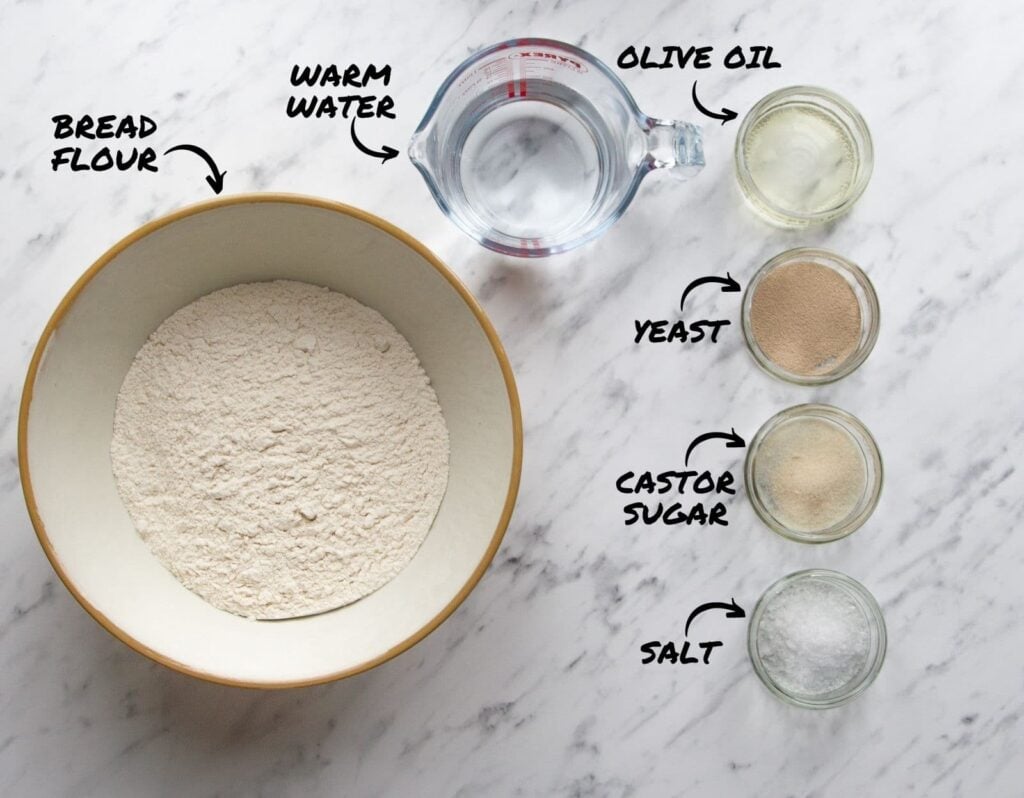
- Flour – Strong white bread flour so the loaf holds it’s shape well and is soft and airy inside.
- Sugar – Sugar feeds the yeast helping to activate it before making the dough. You also need a little sugar to balance the flavour.
- Salt – For flavour.
- Yeast – I use dried active yeast.
- Oil – To help the bread to retain maintain moisture and stay fresh longer.
- Water – To bind the dry ingredients and form the dough. It should be lukewarm to activate the yeast and make kneading the dough easier.
Equipment
- Baking parchment.
- Kitchen roll.
- A grill (or broiler for those in the US) to brown the top of the loaf – this is optional.
- Again optional, but you may choose to use a stand mixer with dough hook to form the dough.
How to make slow cooker bread
Here’s a step by step guide of how to make it. Full detailed instructions can be found in the recipe card at the bottom of the page.
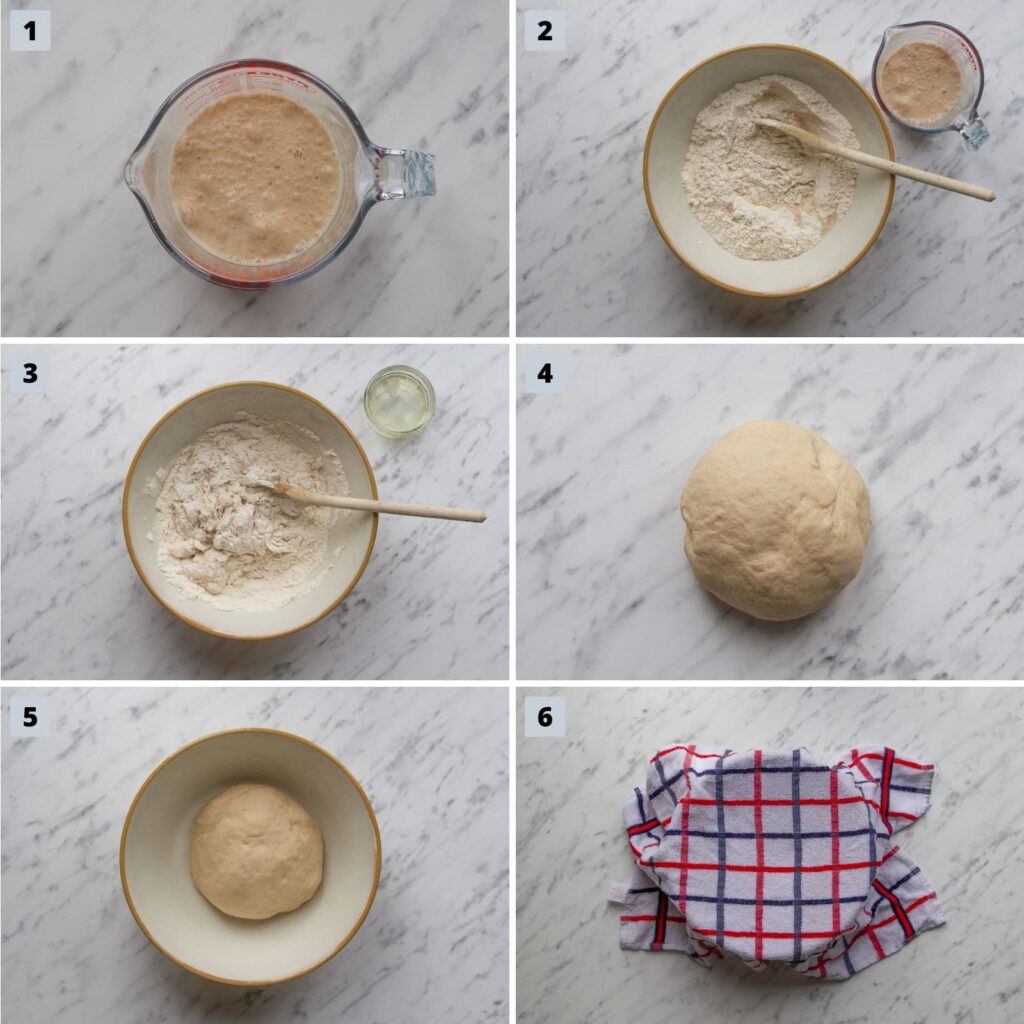
- Start by activating the yeast. Fill a jug with lukewarm water and stir in half of the sugar then the yeast. Set aside for 10 minutes until the yeast has foamed on the surface.
- Put the flour, remaining sugar and salt in a large bowl, stir to combine then gradually pour in the yeast water and mix.
- Add the oil gradually combining to form a dough.
- Remove the dough to a floured surface and knead 10 minutes. (see recipe card for instructions using a stand mixer). Form into a ball shape.
- Place the ball of dough in a large bowl.
- Cover with a damp warm cloth and leave for 45 minutes to 1 hour to rise as the dough ferments.
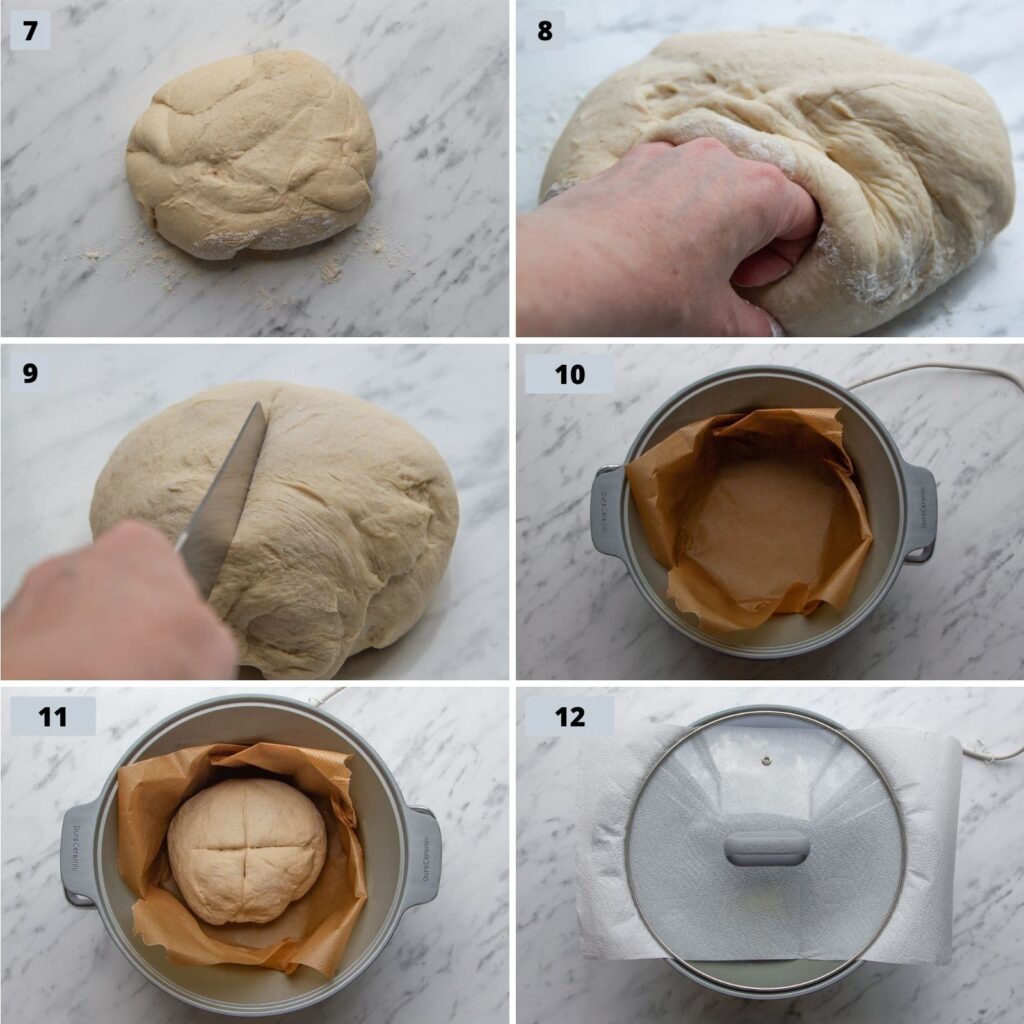
- Remove the dough from the bowl and place on a floured surface.
- Knead the dough for 1 minute to knock out the air.
- Form the dough into a ball then score the top with a sharp knife. This encourages crispy sections to form on the crust. Set the dough aside for a final proof whilst preparing the slow cooker.
- Line the slow cooker with baking paper and fold over any overlapping areas (so the paper does not stick in the dough). Set the slow cooker to high and allow to heat up (around 20 minutes)
- When the slow cooker is hot, place the dough in the middle of the paper.
- Rest 2-3 sheets of kitchen roll over the top of the pot and put the lid on to secure in place, this catches any excess moisture in the slow cooker. Bake for 2 hours on high.
Remove the loaf by lifting the edges of the baking paper.
To create a golden crust on top (which you just won’t get in the slow cooker!) briefly place the dough under the grill. See picture below for before and after the grill. As you can see it’s worth it for that beautiful golden colour!
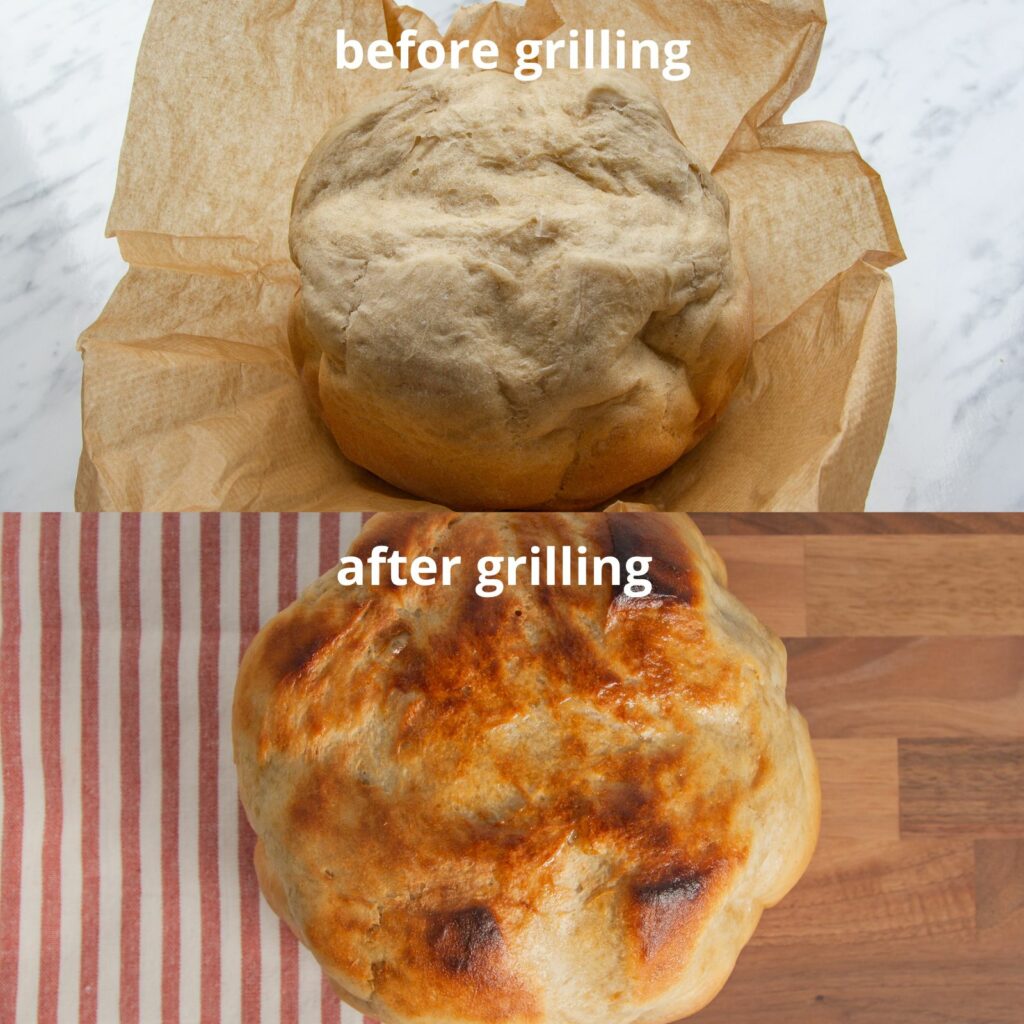
Serving Suggestions
Slow cooker bread is the perfect partner for soups and casseroles like our slow cooker tomato soup and slow cooker sausage casserole but it also is lovely served simply with butter and jam.
This loaf also slices really well, so can also be used for sandwiches and toast. It’s an all round winner!
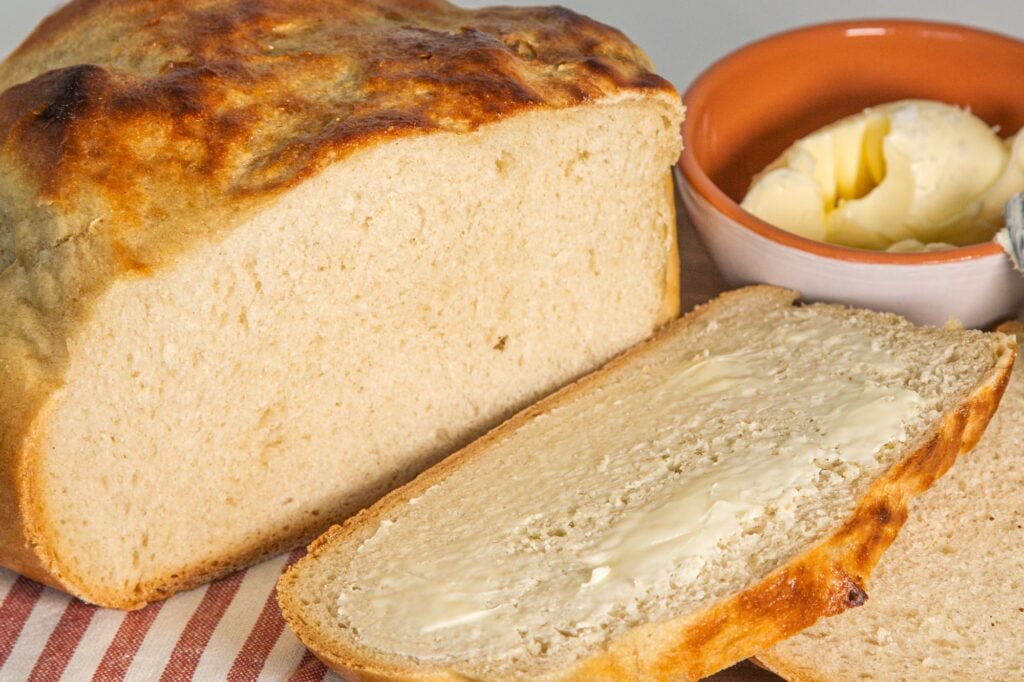
Top Tips
Bread flour – Bread flour has a higher concentration of protein creating a stronger flavoured loaf with a springy texture. Plain flour can be used as an alternative, it will have a more ‘crumby’ texture but it will still taste delicious!
Water Temperature – The water needs to be lukewarm for the yeast to activate, which is about body temperature so if you dip your finger in you shouldn’t feel a temperature difference.
Kneading – Knead for the required time to properly combine the ingredients and develop the gluten structures. Not taking time to do this can result in loaf the being dense and sinking in the middle. If using a mixer I still knead dough firmly by hand for a few minutes at the end. This also means I can make sure it feels the right consistency. This short video from King Arthur Flour is a good guide for kneading technique.
Kitchen towel – Slow cookers retain moisture as they are an enclosed cooking environment. A few pieces of kitchen towel under the lid will absorb moisture to avoid soggy, dense bread.
Baking parchment – Line the slow cooker with baking parchment to prevent the bread sticking to the pot. It’s also much easier to safely lift out at the end.
Fermenting ‘proofing’ the dough – The temperature of the environment whilst proofing dough will affect the speed in which it rises. In a warm, sunny kitchen dough can rise in 45 minutes to an hour. In a cooler environment more time will be needed so factor this in before you start. Also be aware that over-proofing (if it’s too hot or the dough is left for too long) can cause the yeast to expire itself before baking resulting in a dense crumb structure, particularly at the bottom.
Browning – Bread baked in the slow cooker won’t have a golden crust on top, it’s simply not a dry enough environment to create this. So I always put it under the grill to brown after baking. I use the grill not the oven because I just want to continue cooking the crust (the oven would continue to bake the whole loaf).
Oil – After the loaf is cooked and browned under the grill (whilst it’s still hot) I like to paint it with butter or oil immediately. This adds a gleam to the loaf and removes any dryness from the crust.
Recipe variations
Flour – You can substitute the bread flour with plain (all purpose) flour. Wholemeal flour can also be used instead of white bread flour if preferred.
Flavourings – Add dried herbs to the bread dough to create a slightly different flavour profile. Rosemary and dried garlic granules work nicely – just use a moderate amount of each as to not overpower the bread (1/2 tsp). I also like the pre-made sachets of bread seasoning that you can buy such as the Allinson’s Additions bread flavour sachets.
Toppings – Sprinkle over some grated cheddar cheese and freshly cut chives in the last 20 minutes of baking for a delicious topped loaf.
FAQs
Flour, water, yeast, sugar and salt are the core ingredients for bread. You can create an enriched dough by adding milk, butter, oil or eggs which will alter the taste and texture.
Bread flour is best for bread. It has a higher protein (gluten) content than regular flour which creates a more elastic dough with springy fibres which allow air to pass through gently. Plain (all purpose) flour can be used but the resulting loaf will have a denser, crumbier texture.
Oil is added to loaves to improve the texture by adding moisture. It also makes the bread stay softer for longer.
Kneading dough is a way to thoroughly mix the ingredients so that the yeast is distributed evenly throughout. It also allows the gluten in the flour to mix with the other ingredients and form strands which give the bread shape whilst baking and allow air to pass through.
Technically, proofing is the term used to define when the dough is shaped into a loaf and allowed to rise just before baking. Saying that, the term is often also used for the first time dough is rested whilst the ingredients ferment. Proofing allows gluten structures to develop and air to distribute through the dough as the yeast feeds on the sugars, essential for the structure and rise of the loaf.
Yeast is a simple, live microorganism. It is used in bread because when it feeds on the sugar in the dough it slowly releases carbon dioxide gas which creates air pockets in the dough, thus rising (leavening) the loaf. Bread made without yeast is called unleavened bread.
Dried active yeast needs to be re-hydrated in a luke-warm, sugar water solution before baking. Adding it to water awakens the yeast and it begins to feed on the sugar releasing gases which creates a thick, milky foam. This process also indicates whether the yeast you have is still alive and good to bake with!
More Slow Cooker Baking ideas
Here are some other ideas for baking in the slow cooker!
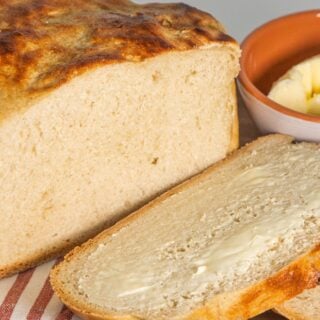
Slow Cooker Bread
Equipment
- Stand mixer optional
- Grill optional
Ingredients
- 500 g (4 cups) flour strong white bread flour
- 2 tbsp olive oil
- 2 tsp yeast dried, active yeast
- 2 tsp salt
- 1½ tsp castor sugar
- 290 ml (0.51 pt) warm water
- 2 tbsp flour for kneading
Instructions
- Activate the yeast. Fill a jug with lukewarm water and stir in half of the sugar, then the yeast. Leave for 10 minutes to foam on the surface (see recipe note 1).

- Add the flour, remaining sugar and salt to a large mixing bowl and stir to combine. If mixing by hand, make a well in the middle and gradually pour in the yeast water and then the oil stirring to combine the flour and liquid.

- Once a dough begins to form, remove to a floured surface and knead by hand for 10-15 minutes. (see recipe note 2 regarding the use of a stand mixer).

- Check the consistency of the dough to ensure it has been kneaded enough to rise and maintain its shape. For this loaf the dough should be stiff and slightly tacky to the touch (see recipe note 3 for methods to check the dough consistency).

- Shape the dough in a large ball, cover with a damp tea towel and leave to ferment (first proof) for between 45 minutes – 1 hour 15 minutes depending on the temperature of the room or proofing area. The yeast will activate faster in warmer environments.

- The dough will be doubled in size and have a pillowy, smooth texture (see recipe note 4).

- Remove the dough to a floured surface and knead for 1 minute to knock the air out of the dough. Shape the dough into a smooth ball then score the surface with a sharp knife in a cross pattern and set aside.

- Take a piece of baking parchment and line the base and sides of the slow cooker. Fold any areas where the paper overlaps to create a neat lining then switch the slow cooker to high and leave to heat up with the lid on for around 20 minutes.

- Carefully place the ball of dough in the slow cooker resting on the paper.

- Take 2-3 sheets of kitchen paper (with the joining sections of the paper intact) and rest these across the top of the slow cooker pot. Trap it in place with the lid of the slow cooker (see recipe note 5). Bake on high for 2 hours.

- After the dough is baked (see recipe note 6), remove it from the pot by lifting via the edges of the baking parchment. The loaf will be brown on the top as it has not been in direct contact with a heat source. In fact, the base of the loaf will be firmer and more browned where it has been directly over the heating elements.Optional step: To create a golden brown crust, remove the bread from the baking parchment and place under a medium heat grill for 3-5 minutes.

- Once the crust is golden, remove from the heat and set aside on a baking rack to cool. At this point I like to paint the loaf with butter or oil (around 1 tsp) to create a gleam to the surface and moisten any dry areas of the crust.

Notes
- Yeast. If you have dried instant yeast this step can be skipped – simply add the yeast with the other ingredients.
- Food mixers. If you are using a stand or food mixer, apply the dough hook then add the flour, sugar and salt to the bowl and mix to combine. Gradually add the yeast, water and oil and mix on a medium setting for 8 minutes, then remove to a lightly floured surface and knead by hand for 1-2 minutes.
- Dough needs to be thoroughly kneaded for the gluten the flour form strong structures. This gives the bread it’s texture and shape. Generally 10-15 minutes of kneading by hand and 8-10 minutes in a mixture will be enough to achieve this. Ways to check the dough has been kneaded enough are 1) form a ball shape with the dough and hold it up in an open hand, the dough should be firm enough to hold its shape and not droop or 2) press a finger lightly in the dough to form an indent. The dough should spring back to fill the indent after around 30 seconds.
- It’s important to proof the dough for the right amount of time to create a good crumb structure and rise. An under-proofed dough will not be doubled in size and still firm to the touch, whilst an over-proved dough will show signs of bubbling and tearing on the surface of the dough.
- Kitchen paper under the lid of a slow cooker will catch any excess moisture generated whilst the bread is baking and prevent the dough ‘sweating’ or becoming saturated. I do not recommend using a tea towel for this as the aroma from any washing detergent used on the tea towel may taint the bread.
- Test the bread is baked by knocking on the base of the loaf, this should produce a hollow sound due to the dispersion of air throughout.

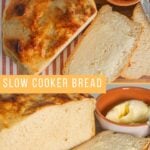
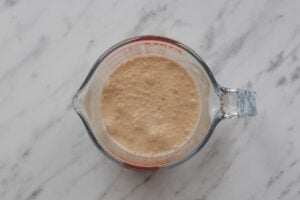
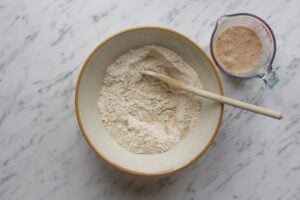
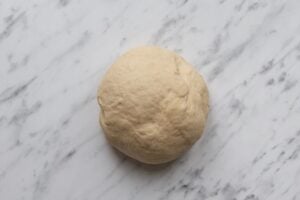
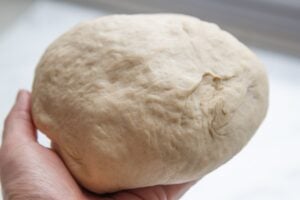
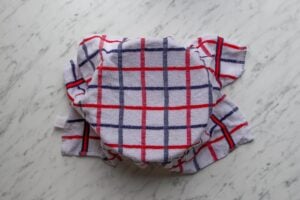
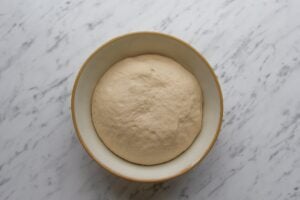
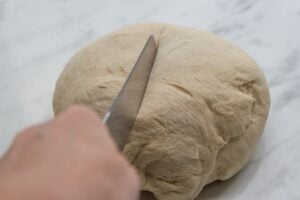
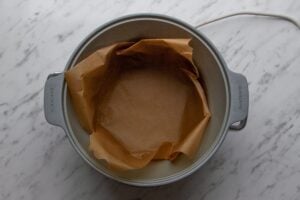
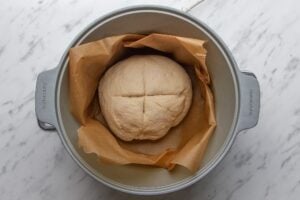
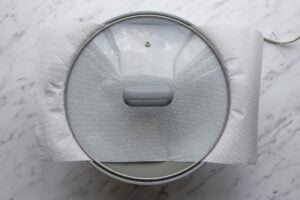
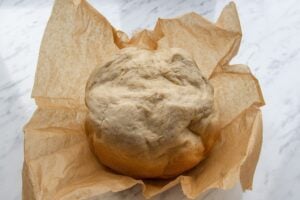
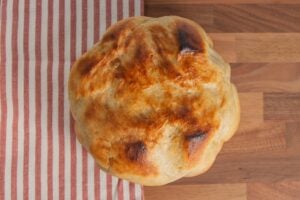

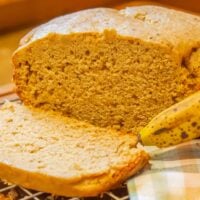

Debbie Dunham
Monday 6th of February 2023
Lovely soft bread - reduced size for 2 with first attempt but so lovely upt to 3 - good bake and cooling for sandwich making. Win-win - no oven and with a bit of planning very easy to prepare, bake and eat! Thank you very much for testing and sharing these wonderful recipes.